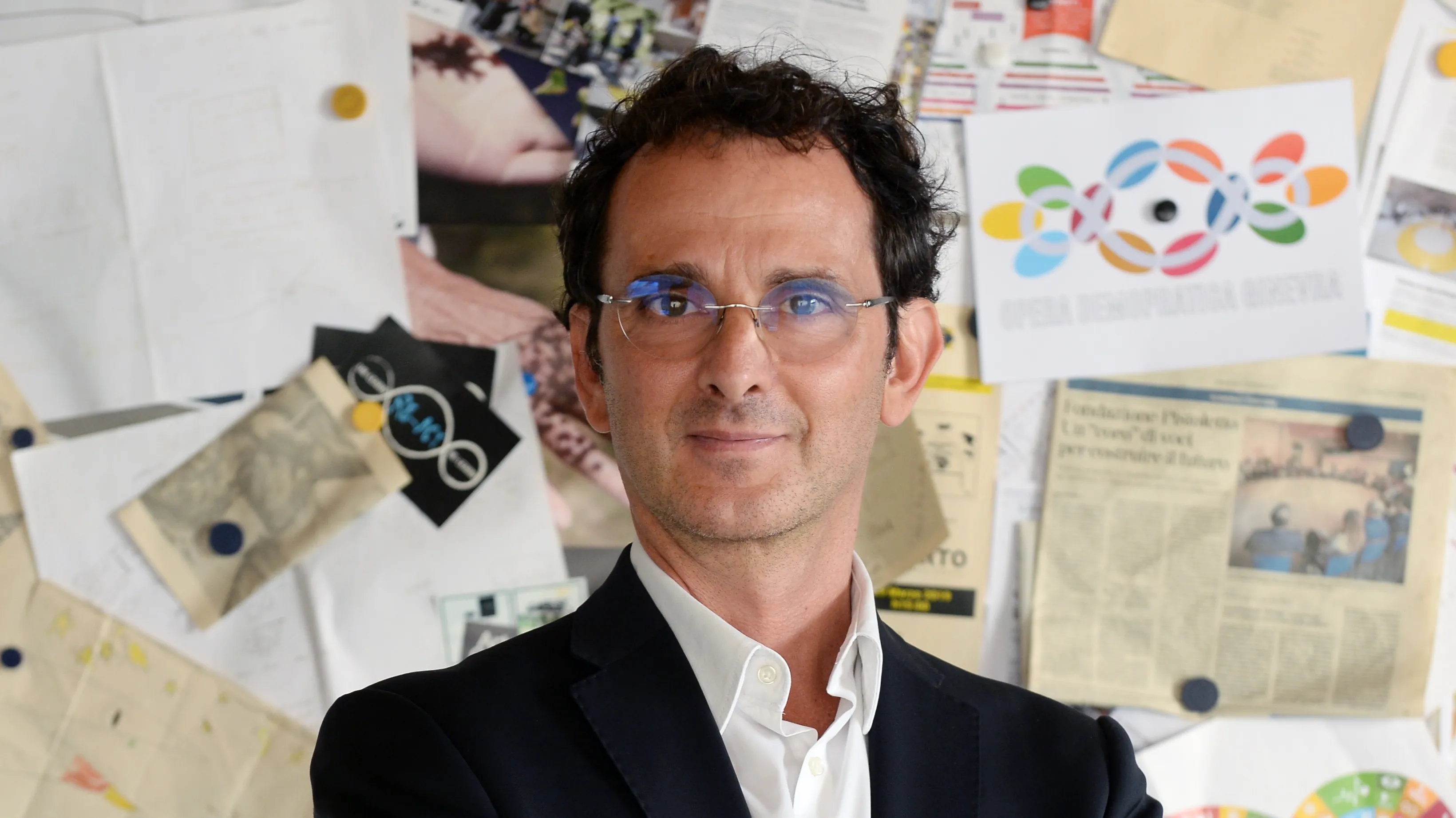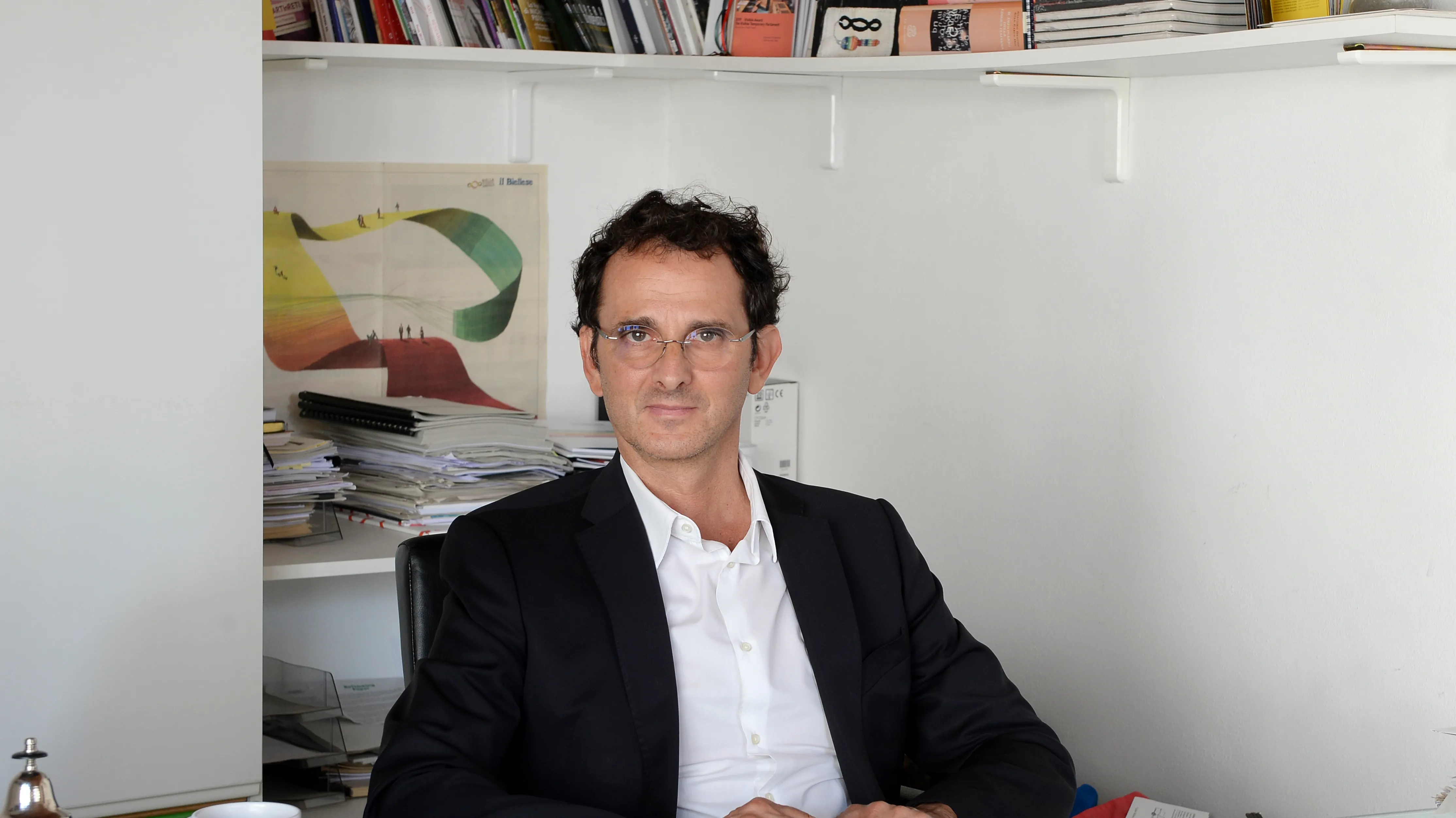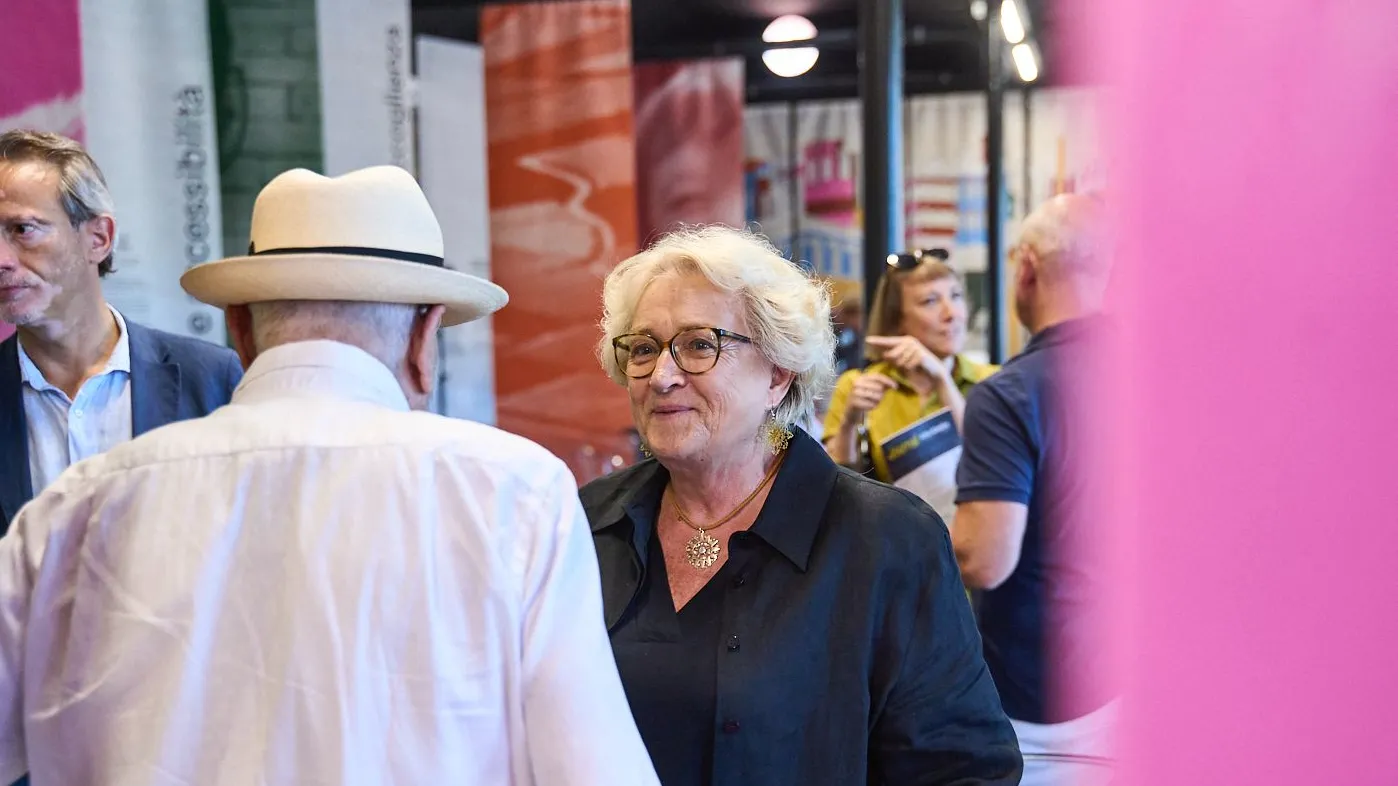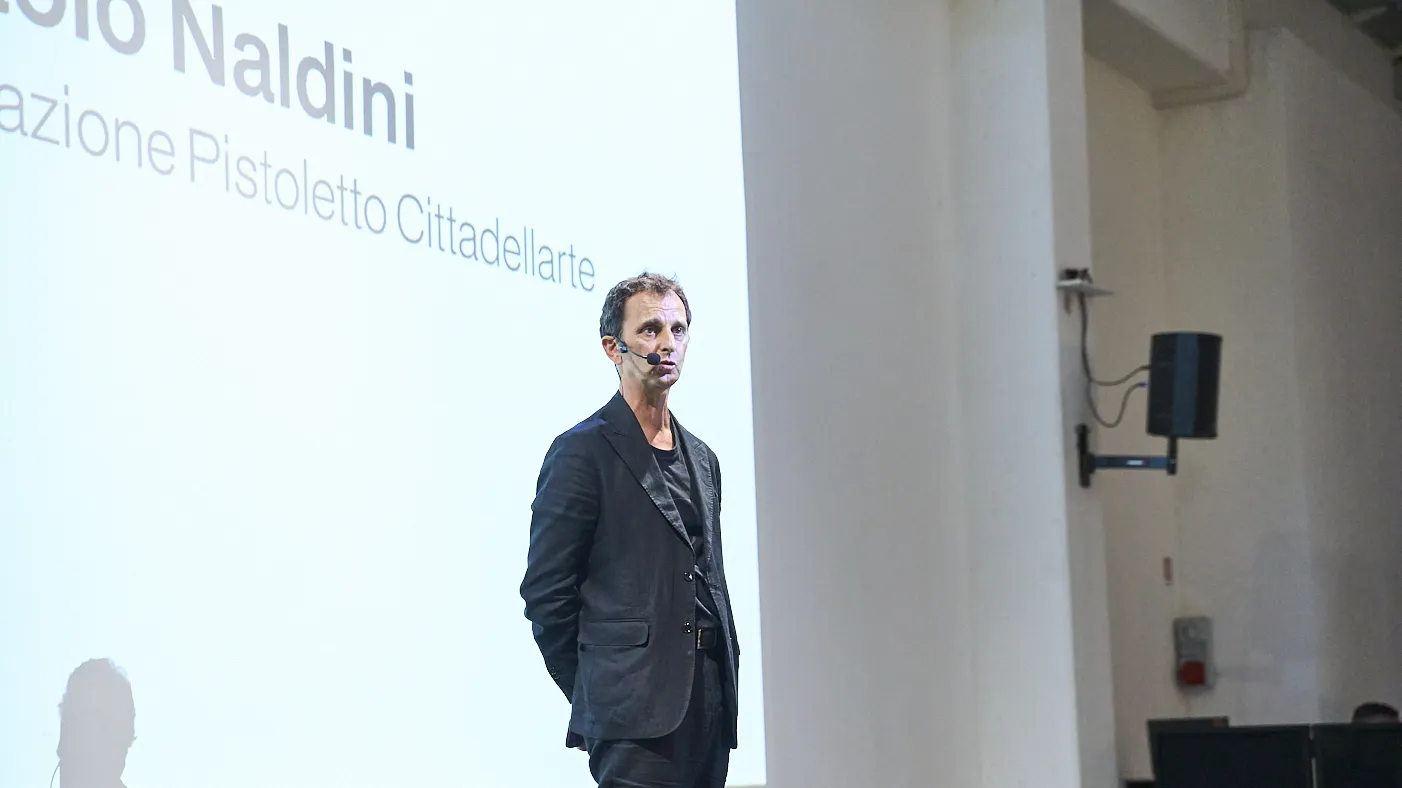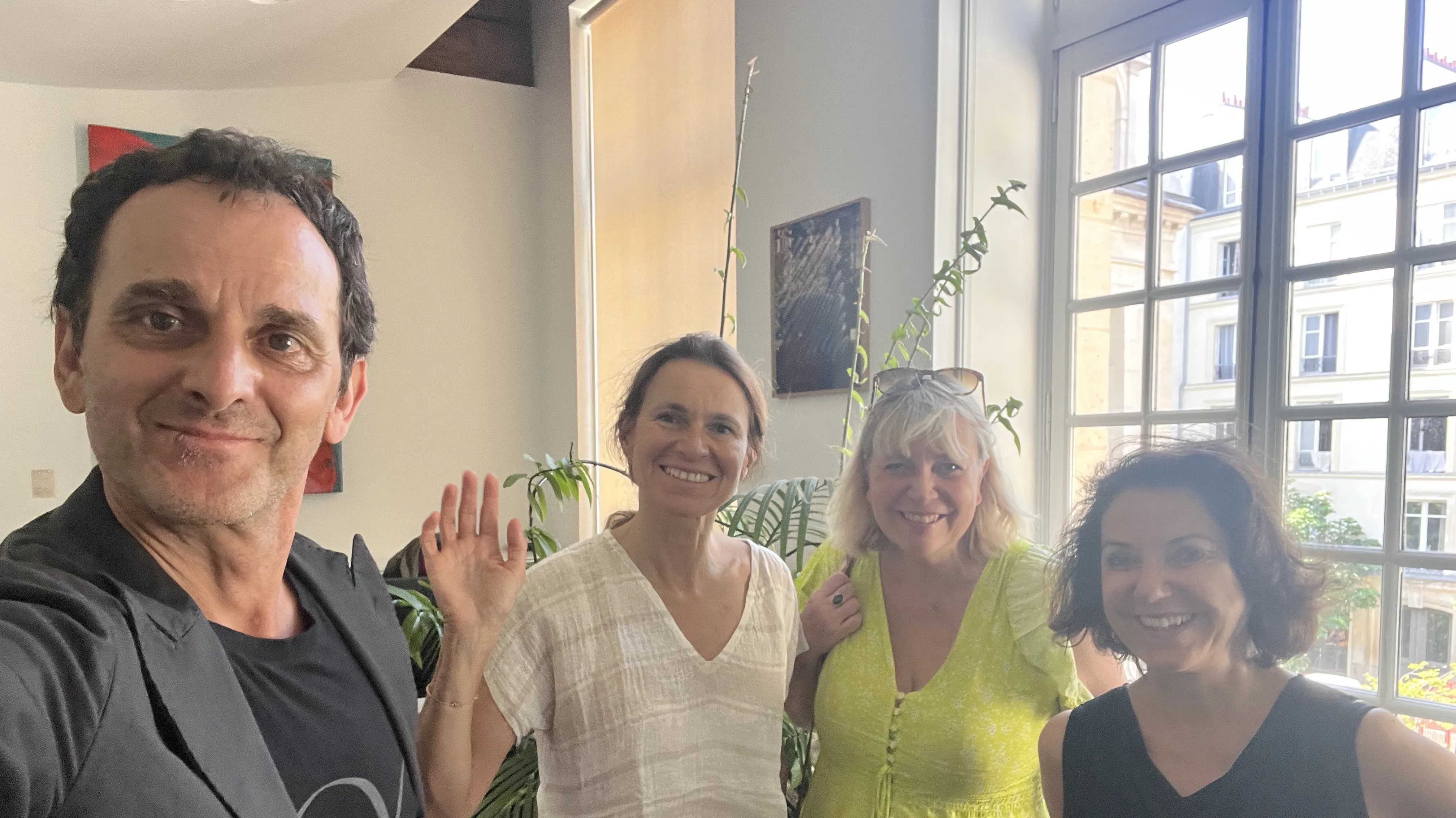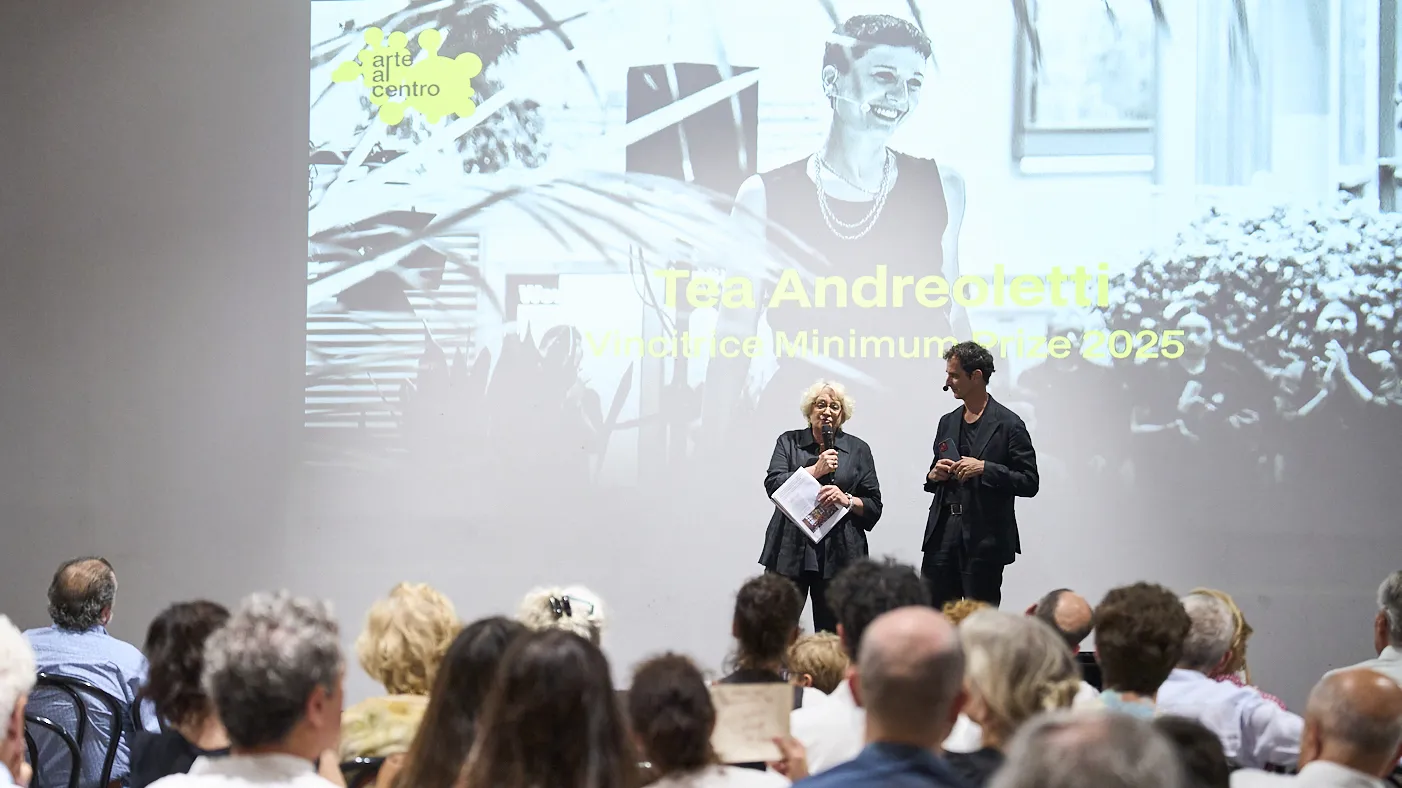What can we
help you find?
Ricerche suggerite
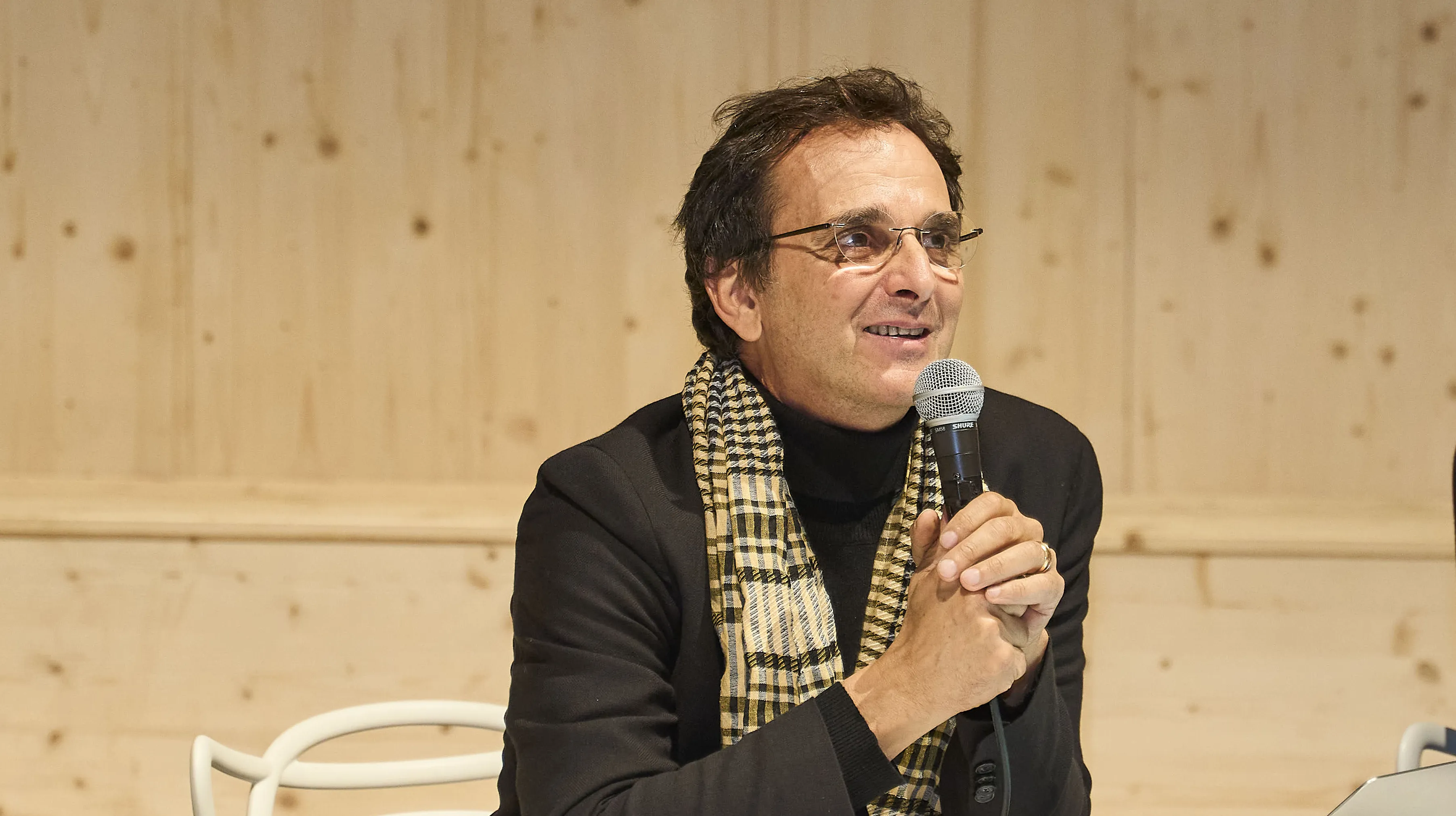
Demopraxy: Infrastructuring the "Statodellarte"
On Tuesday, October 21, the 19th International Architecture Exhibition of the Venice Biennale hosted "Intelli_gens Demopratica," a day of study and discussion of Demopractic works. To (re)discover what emerged, we present the initiative's first keynote speech: "Art for Infrastructuring the Social," by Cittadellarte Director Paolo Naldini. "Demopraxy," he stated, "is not a claim for rights, because it speaks precisely to the governance that the demos exercises through the system by which the practices that constitute our lives are organized, regulated, and carried out. Organizing people's lives is governing."
We've been implementing demopractic projects around the world for 10 years. We've completed over forty iterations. Currently, there are more than ten active projects; in chronological order, Cuba, Biella, Rome, Geneva, Gorizia/Nova Goriza, Busto Arsizio, Seoul, L'Aquila, Scanno, London, Paris, Milan, and Turin are still being confirmed. But what are demopractic projects? And what is demopraxy in general?
When I talk about demopraxy, no one immediately understands me. Not only the concept, but the term itself didn't exist before I invented it. The fact is that praxis means practice, and when we say demopraxy, we're putting practice into the word democracy where kratos, or government, used to be.
At this point, people often think they've understood: many think that those who actually do things, those who commit and work, those who physically operate in their context, have the right to decide, that is, to govern. But that's not quite right; on the contrary, demopraxy isn't a claim for rights. Demopraxy is precisely about the governance that the demos exercises through the system by which the practices that constitute our lives are organized, regulated, and carried out. Organizing people's lives is governing. Those who carry out practical activities tend to influence how the people around them live. Clearly, we're not talking about solitary practices here, what people do as individuals in the spaces of effective and real singularity that we all possess, even in our intimacy. These practices, let's say individual, probably also have a real impact on our lives. But demopraxy concerns those practices we carry out in groups. This fact about groups is the basis of my theory of demopraxy. In reality, in most cases, in our lives, we carry out activities or practices in groups. So if we concern ourselves with these practices carried out in groups, we are effectively dealing with a very important part of life.
What's left out? In addition to individual practices, there are activities delegated through forms of representation. Among these, the most widespread and impactful is that of political life conducted through political representatives. Demopraxy, therefore, concerns everything that remains of our lives after we have eliminated individual and representative practices. We could say it concerns what lies between individual practices and those delegated to representatives. It's a large space, much larger than we normally think. The space of work, personal interests, vocations... If we think about it, in this space between individuality and delegated representation, there remain enough practices and activities to keep us awake at night or, conversely, give us a certain serenity in life.
Analyzing the practices carried out in groups, we note that a very important part is played by those we perform to earn a living. Most of us spend most of our time doing what allows us to live; generally, this is work. And then there are other activities we do because we're interested, such as vocational ones, such as joining a volunteer association. And there are recreational ones, such as sports or music. When we do these activities, we're with other people. That is, we do them in groups, sometimes very large and complex, sometimes made up of three or four other people.
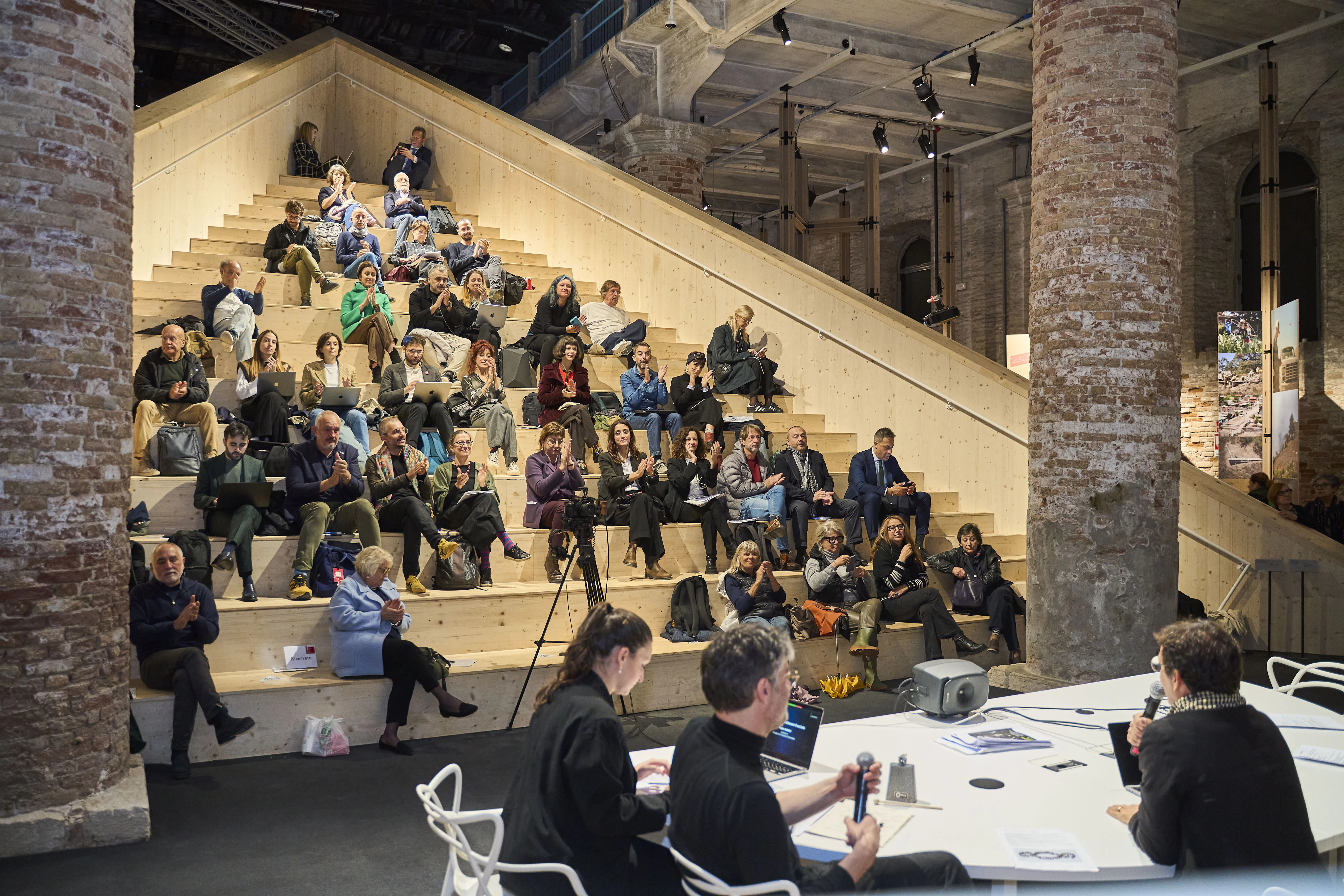
In truth, couples can also be considered a group within which we carry out important life activities. According to the theory of demopraxy, couples follow the same considerations and entail the same consequences that apply to a group of work colleagues or teammates. These activities, especially professional ones, lead us to join other people for a significant portion of our lives. For many of us, this involves most of our time other than rest. Therefore, most people's lives are spent in groups, and these groups have rules that directly impact our lives. This is why in 2012 I said to myself: so we're constantly living in small parliaments and microgovernments!
People's real, practical lives are made up of constant governing and parliamentary activity, even if few of us are the president of the government or the leader of the parliament we serve in at work, for example. It's difficult to say to what extent these microgovernments matter in relation to the institutional governance that organizes collective life—that is, the governance of the state or municipality in which we live, that is, the institutional governance of the community.
But demopraxy is neither an exact science nor an accounting system. It is a sociopolitical theory. It is based on the recognition that the governance of the people (the kràtos of the demos, to use the formulation derived from ancient Greek) also occurs through the groups that unite people based on the activities they engage in, based on the practices these groups organize. And be careful: not based on ideologies, beliefs, religious affiliations, or more or less fictional identities. Thus, through demopraxy, we acknowledge an often-denied reality: that the governance of our lives also depends significantly on the groups in which we participate in our daily lives and in practice.
This idea is not a proposal. It is the description of how a fact, the governance of life, works. It is a phenomenology, not an ideal.
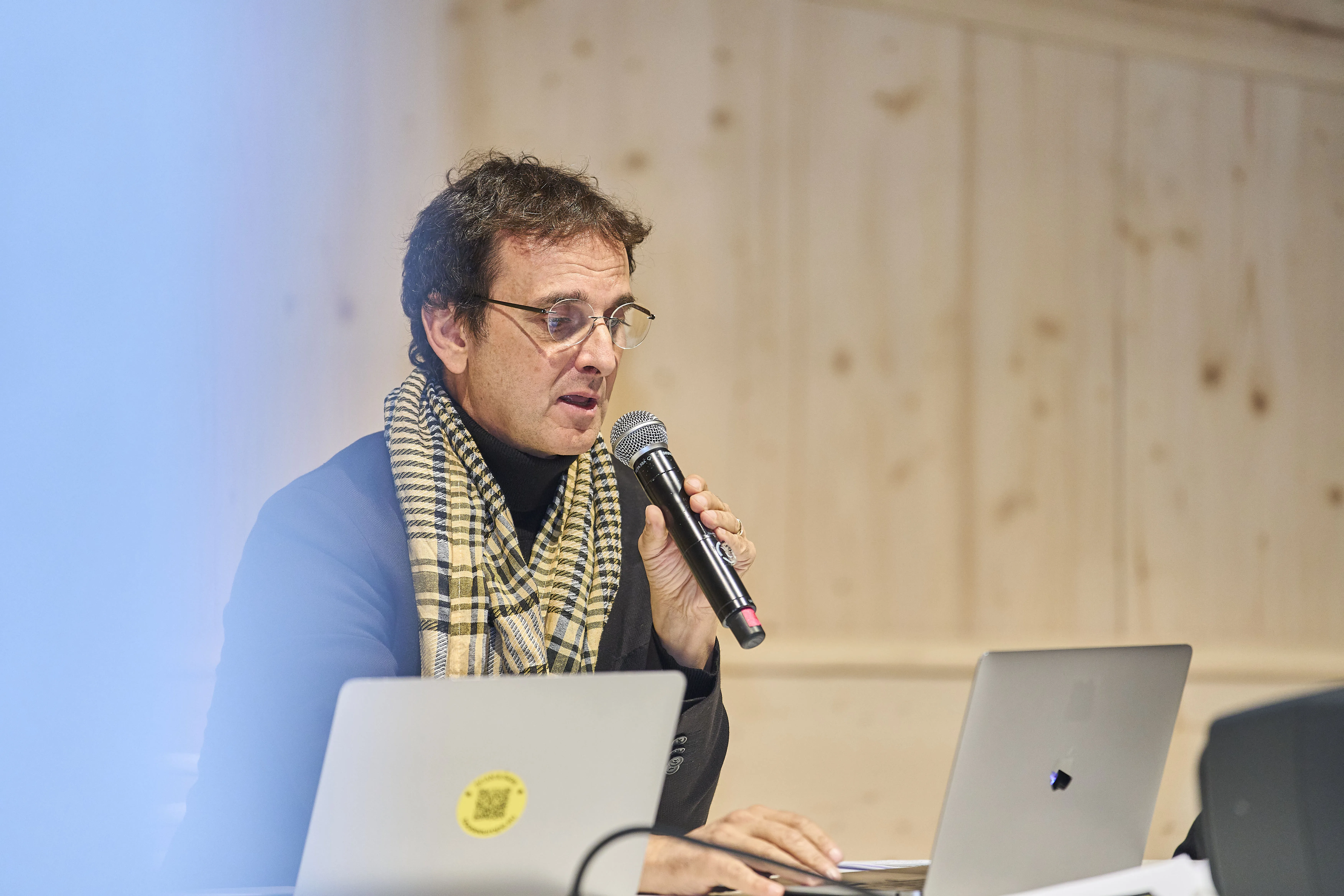
When we say demopraxy, therefore, we mean that the governance of the demos also occurs through the practices people carry out in the groups in which they spend most of their lives. One might wonder if this wasn't also the case in the past. It certainly was before capitalism and modernism, when the social structure was clan-based, that is, founded on groups. And it was clan-based because the production of subsistence for life was organized in small groups led by a pater familias. With the arrival of industry, the clan disintegrated: machines demanded to be operated by a single person regardless of their group or clan membership. The individual emerged as the pawn of the economic system as the standard of the productive factor of labor, that is, of practice. The dialectic between workers and capitalists was based on the fact that the production system effectively held the two together: bound and pushed forward by the great wave of progress, a Hokusai wave that defined the twentieth century, but began much earlier.
Now everything has changed: the idea of the productive and consumerist individual has proven to be a failure. If we follow it, we will end up extinct. Some will go to Mars and survive in their Orwellian resorts, but the others will perish unless we radically shift our fundamental paradigm.
And we are moving from the era of the individual (lupus) to that of the group. Even the group can be lupus, a tyrannical group, and so it would be no great gain to move from the tyrannical individual to oligarchic tyranny. The only way to ensure that authoritarian tendencies are counterbalanced is to always maintain the method of creation through the confrontation of opposites: 1 + 1 = 3, trinamics, dialectical synthesis, generation and regeneration. Even when a seemingly satisfactory result is achieved, we cannot avoid applying the formula of creation, that is, comparing the result itself with a phenomenon that is opposite to it, or at least different.
Authoritarianism will therefore encounter other methods and systems. The best and most desirable of the systems we may have achieved will do the same. This process is the only one that prevents the sclerosis and self-referentiality of organizations, be they political parties, businesses, or social regimes. Therefore, it is not enough to recognize and promote the consciousness of governance in the groups that make up society; we must connect them to one another in the dynamic of generative exchange, the exercise of exchange, and co-creation. Therefore, the foundations of this state of affairs that we observe and that we wish to bring to light in its full realization are Demopraxy and the Third Paradise, which is the application of the formula of creation to nature and technology.
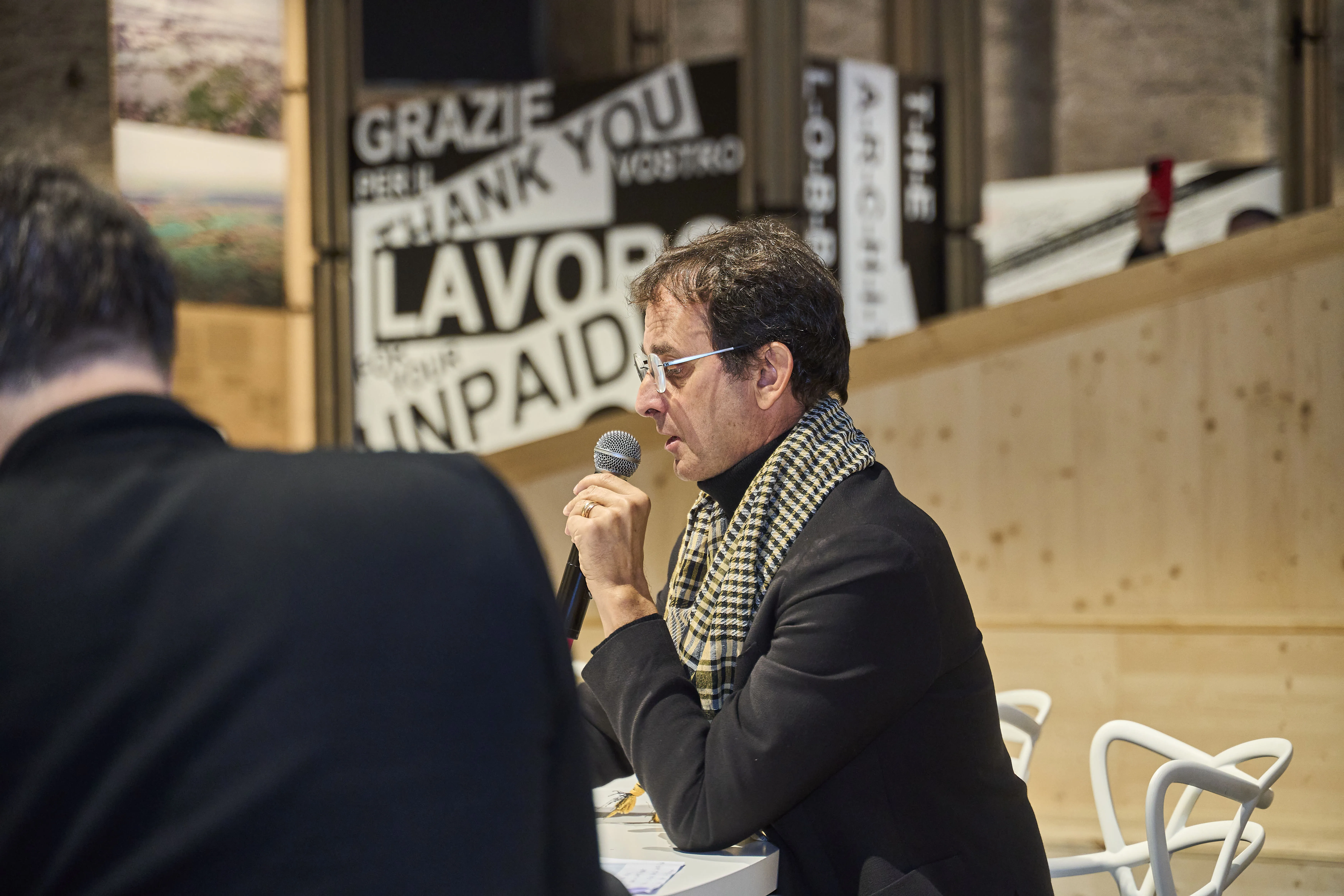
What purpose do we have for these foundations? To repair the social infrastructure. Now that the paradigms of progress and the individual, both founded on the Renaissance perspective of the linear and progressive conquest of space, have decayed. With the paradigms of group demopraxy (which we more precisely call communities of practice) and the circular evolutionary formula of the Third Paradise, we lay the foundations for a new and solid social infrastructure.
Social architecture for groups/communities of practice becomes a sign of the times and the key to turning points in our transitional age. How is this infrastructure established? It passes through three phases: awareness or consciousness of governance (implemented through mapping); interconnection in interdependence (implemented through the exhibition and the forum, between autonomy and dependence); implemented through the construction site, it is the connection with institutions and the triggering of circularity between practices and policies, between communities of practice and institutions.
Last Thursday, I met with the President of the Republic, Sergio Mattarella. When I briefly explained to him how a Terzo Paradiso installation in the new FAO museum in Rome works, as a way to bring food communities together and co-create—starting from practices—policy proposals with institutions, he told me it was "an encouraging vision."
We have initiated and tested the first phase—awareness or governance consciousness—in over 30 cases, in about twenty cities. The second—interconnection within interdependence—is now reaching an important milestone: for the first time, we are engaging with demopractical works. Above all, to achieve this goal of interconnection within a complex system, we have founded the Statodellarte, drafted its first Constitution, and are establishing its governing bodies. The third phase, that of connection with democracy, that is, with the functioning of the institutions that govern our lives, is in its infancy, or is already active only in individual demopractic works, but precisely with the establishment of the State of Art, it becomes practicable within the entirety of an infrastructural social system.
The ways and forms are yet to be defined, or rather, I would say, to be invented together. Therefore, it is a matter of establishing and maintaining, or upholding, the infrastructure of the State of Art, which is, in effect, a social, civic, and political belonging based on the art of demopraxy. In the latter, art, as creation, is a source of freedom and therefore of responsibility. Demopraxy is understood as a way of building a society emancipated from individualistic capitalist prejudice, because it is founded on practices carried out in groups.
What has been seen and done today? We have woven interdependence between these first demopractic chapters. I called them works, referring to their practical and artistic dimension, works situated in very different contexts, and from this diversity we derive insights into the potential extensibility of this infrastructure to very different cultural and socioeconomic realities. Finally, we explored how the Constitution of the State of Art envisions engaging the social structures of communities of practice, starting with businesses and various forms of association, in the demopractic infrastructure.
Paolo Naldini
To rediscover the Intelli_gens Demopratica event, you can read our previous article.
